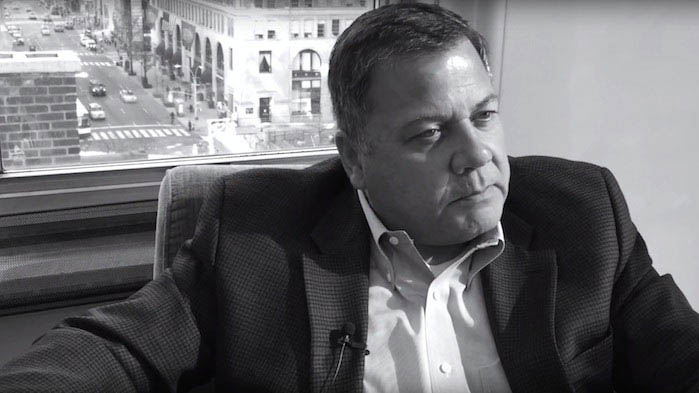Take1 Insurance has made a name for itself within the event production community in recent years, most prominently with its involvement with the Event Safety Alliance and insurance offerings aimed to protect vendors from weather-related events. Now, in response to high-profile terrorist attacks in recent years involving entertainment sites, the company has debuted Combined Crisis Cover, which it bills as an insurance protection policy for the live and special event industry. The policy provides immediate coverage of up to $35 million annually in the event of—or threat of—“malicious acts,” including terrorism, active assailants and other antagonists who interrupt or cause the cancellation of a planned live event.
The motivation behind the policy originated for Take1 executive vice president & program director Scott Carroll when he attended London’s International Music Conference in March, 2016: “There was a particular panel focused on the incidents from the Bataclan nightclub attack in Paris that had occurred five months prior, in November, 2015. A question was asked of the panel: ‘Do you believe that the Bataclan incident was a random act or was it a specifically targeted event?’ One panelist thought it was completely random—it could have been a grocery store or a mall, and there was low security, easy access, lots of people. That didn't sit well with me, to be honest, because I felt differently as to whether entertainment and music was particularly targeted.” Conferring with other music and insurance professionals, Carroll soon confirmed he wasn’t alone in that view.
The result was Take1’s Combined Crisis Cover, which was designed to more specifically address the needs and issues related to a terrorist event, though taking a different approach than the backing proffered by the U.S. government’s Terrorism Risk Insurance Program Reauthorization Act. TRIPRA may be applicable to cover some companies affected by terrorism, but its guidelines are narrowly defined.
“After 9/11 took place, TRIPRA was written so that the United States government steps in as a backstop—not for the insured, but for the insurance industry so that it doesn't collapse,” said Carroll. “It's the only thing that is offered routinely to insurance customers in response to a terrorist act. Our policy responds to what we really think is going on in the world—because it's not always a terrorist attack; for instance, the Boston Marathon bombing and the Pulse Nightclub shooting in Orlando weren’t declared terrorist acts by the federal government. When it is triggered, TRIPRA requires a Secretary of Treasury determination that something is a terrorist act [and] it requires five million dollars of property and liability damage. So your property has to have been damaged to that extent for TRIPRA coverage to enact it.”
The Combined Crisis Cover, by comparison, does not require a federal government mandate or determination that something qualifies as terrorism, and instead refers to the relevant authority for confirmation. “That's a critical component and that is true whether it's the malicious act element of our policy or the terrorist element of our policy; it doesn't even have to [be carried out]; it's simply the threat,” said Carroll. “Let’s say the Broadway theaters here in New York can’t hold their matinees because there’s a bomb threat in Times Square and the police have shut down the area. If I'm a theater owner, I'm not able to put on the performance and I have to refund ticket money—that is called a business interruption loss under a normal property policy. But in order for you to trigger a business interruption loss, you have to have physical property damage—the property carrier wants to say, ‘OK, you refunded those tickets because the bomb went off in your basement.’” Such an event would be covered by the Combined Crisis Cover policy, however, because the relevant authority—the police—had seen the threat as serious enough to close down the surrounding area.
But that said, how does Combined Crisis Cover apply to audio vendors? Carroll noted that when developing the policy, a broad customer base was kept in mind, from venues to vendors, but he offered an audio-based example: “Without trying to get into specifics [due to privacy concerns], a very public event involved one of my insureds—their equipment was confiscated for quite a period of time [in the aftermath of the event] while the investigation was going on. They were therefore unable to utilize that equipment to the point that they were debating whether or not they needed to replace it at their own expense because it wasn't a covered loss. There was no physical property damage that allowed them to file a claim; it just was confiscated by the federal government. They were experiencing a business interruption—a true impact to their business—because of an incident, and in a scenario like that, under our policy, the situation would be a covered loss, meaning you know it's [due to] an active assailant, a terrorist event or whatever it is. So I thought about that when we put this policy together—if I have an insured who's got a million dollars’ worth of equipment hanging from the rigging system at a particular concert and something happens and their equipment is then confiscated or becomes damaged because of what happened in the event, it has an impact.”
The Combined Crisis Cover debuted late last year as an annual policy, afforded at different levels, ranging from covering $100,000 up to $35 million as needed. “I write many insurers who would be considered on the small side and I write many insurers that would be considered on the large side; we wanted this policy to be able to respond to everyone’s budgets,” said Carroll.
This story originally appeared on ProSoundNetwork.com. Click here to read the original post.
